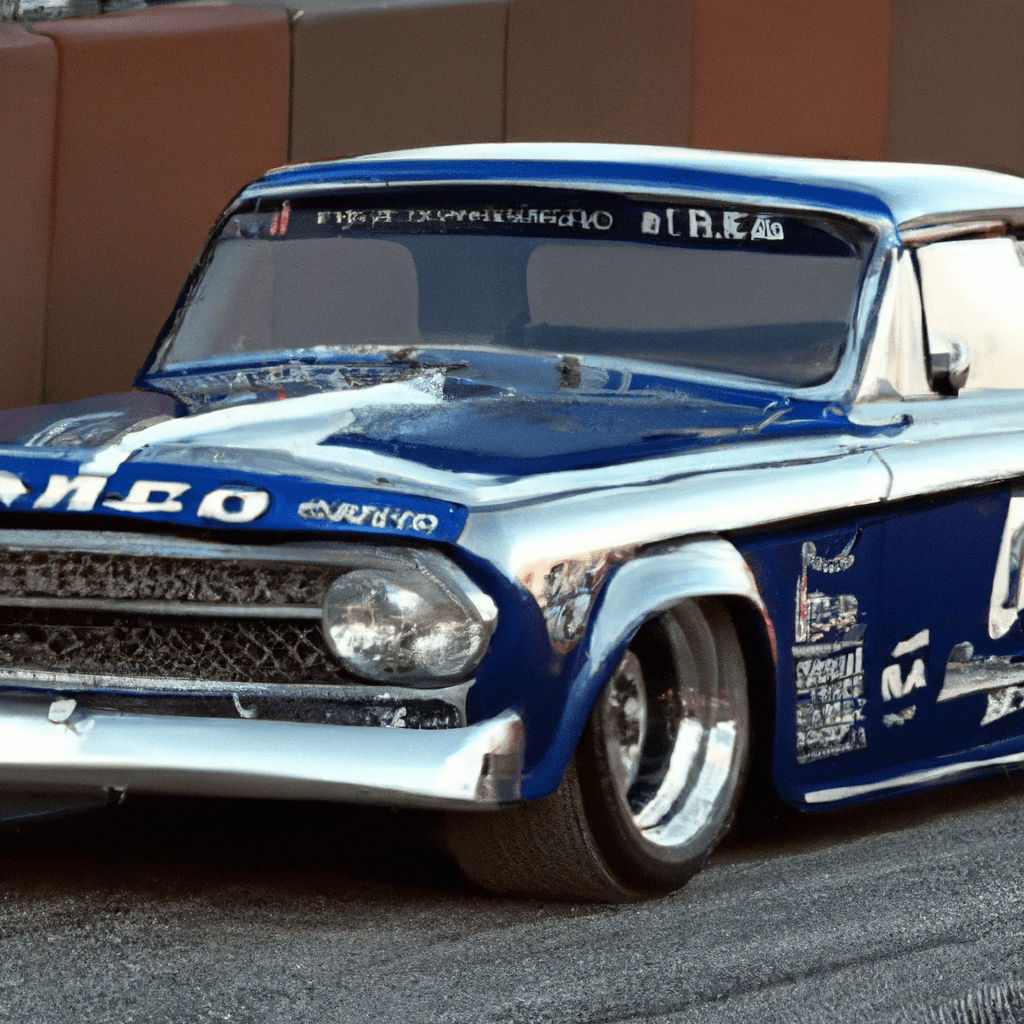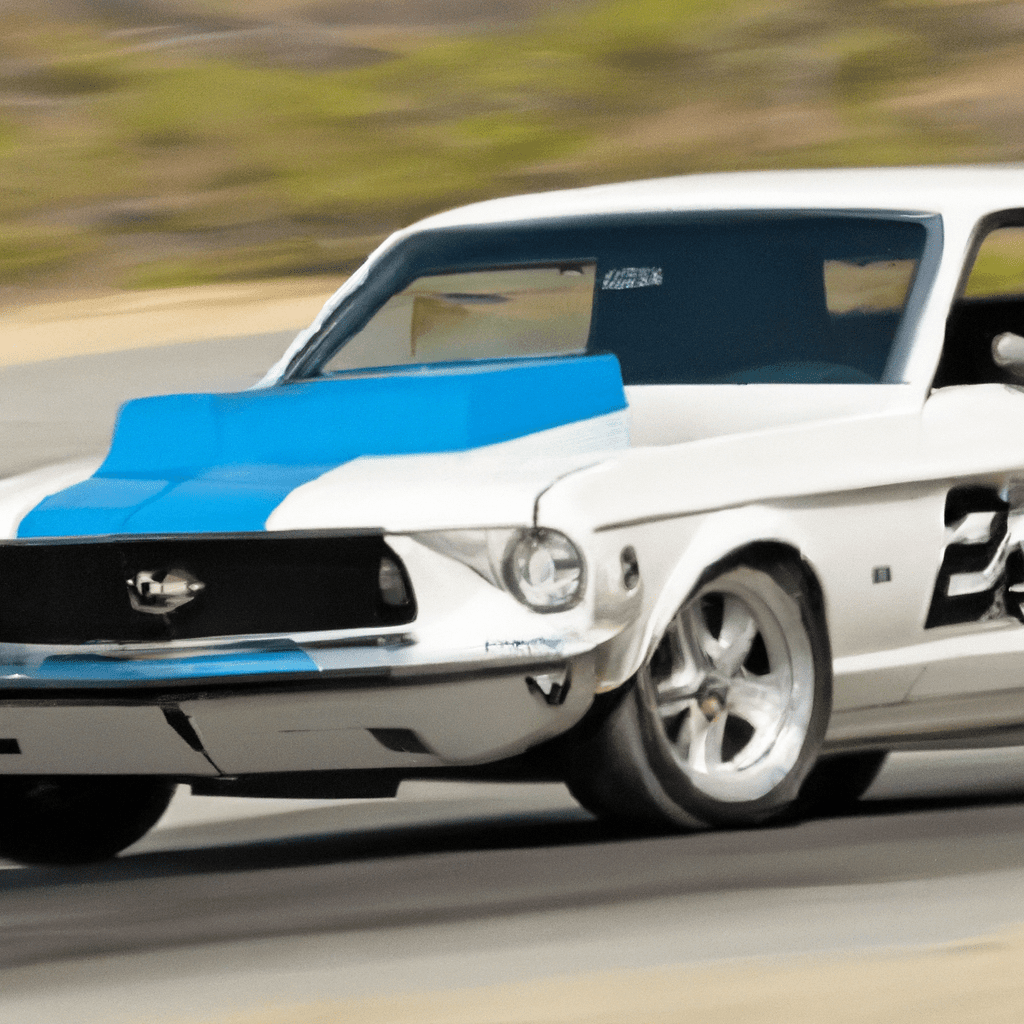Gear up and buckle in as we take a thrilling spin through the essential steps you need to take in order to prepare your Ford for an exciting day out at the racetrack. From fine-tuning the engine to revving up your personally tailored safety measures, “Track Day Essentials: Preparing Your Ford For The Raceway” serves as your comprehensive guide to setting a new personal best on the asphalt. You’re in for a ride that promises to be as educational as it is exhilarating!

Understanding Track Day
Track Day is an exhilarating event that allows car enthusiasts to drive their vehicle on a professional race track. It’s a day filled with adrenaline-pumping driving, testing of your car’s limit, and improving your driving skills.
Definition of Track Day
A Track Day is a non-competitive, controlled event where you are given the opportunity to take your car to the race track and test its performance in a safe environment. It’s not a race, but rather an opportunity to drive at high speed without worrying about the rules of the road or police.
Common Regulations for Track Day
Although Track Day is more relaxed than professional racing, there are still regulations you need to adhere to. These include the mandatory use of a helmet and seatbelts, speed limits in the pit area, and strict guidelines about overtaking. Usually, the use of substances that impair your ability to drive, like alcohol, is strictly prohibited.
Benefits of Participating in Track Day
Participating in Track Day can be an invaluable experience. You can improve your driving skills, understand your car’s performance, and enjoy the thrill of high-speed driving in a safe, controlled environment. It’s also a perfect opportunity to meet and network with other car enthusiasts.
Choosing the Right Model of Ford for a Track Day
If you are a fan of Ford cars, choosing the right model to bring to the Track Day is essential.
Top Ford Cars suitable for Track Day
Ford Mustang and Ford Focus RS are two popular options. They are well regarded for their powerful engines, outstanding durability, and excellent maneuverability, which are ideal for high-speed driving on a racetrack.
Important Characteristics of Ford cars for racing
When choosing a Ford for racing, you should consider characteristics like engine performance, handling, braking system, and safety features. The car should also be mechanically sound and in good condition to withstand the high-intensity driving that takes place on Track Day.
Modifying Stock Ford Cars for better racetrack performance
While stock Ford cars are capable performers, there are ways to improve their racetrack performance. You can modify the engine for improved power, upgrade the suspension for better handling, and install high-performance brakes and tires.
Checking the Vehicle’s Condition
Before hitting the track, you should ensure your car is in excellent condition.
Conducting a Pre-Track Inspection
This involves checking the engine, brakes, tires, fluid levels, and making sure that there are no visible signs of damage or leaking. Always perform this inspection well before the Track Day so you have time to address any issues.
Ensuring Working Condition of the Engine
Check the engine oil and coolant levels. Inspect the drive belts for wear and replace if necessary. Also, have a close look at the battery and its connections. Make sure there are no loose parts in the engine bay which can cause problems at high speeds.
Checking the Health of Tires and Brakes
Thoroughly inspect the tires for signs of damage and check the tire pressure. Take a look at the brake system too. The brake pads should not be overly worn, and the brake fluid should be clear and at an appropriate level.
Upgrading your Ford’s Performance
There are several ways you can upgrade your Ford’s performance for Track Day.
Boosting the Engine Power
You can enhance the engine’s power by installing a more efficient intake system, adding a performance chip, or upgrading the exhaust system. However, be aware that such upgrades may affect your vehicle’s warranty.
Importance of Transmission Upgrades
If you want to improve the responsiveness and speed of your Ford, consider modifying the transmission. Lightweight flywheels, high-performance clutches, and shorter gear ratios can all significantly improve track performance.
Improving Aerodynamics for better Speed
improving your car’s aerodynamics can also increase speed. Consider adding a rear wing, a front splitter, or side skirt extensions to reduce airflow underneath the car, thereby reducing drag and increasing speed.

Maintaining Your Ford’s Safety Features
Safety should always be your paramount concern when preparing for Track Day.
Ensuring the Effectiveness of Safety Belts and Air Bags
Ensure that the seat belts are working perfectly and that the airbags are functional. You should also check if the car has a roll cage or a roll bar, as these could be crucial safety features in case of an accident.
Upgrading Braking Systems
high-speed driving demands effective brakes. Therefore, consider installing bigger rotors, high-performance brake pads, or even a full racing brake kit for optimum stopping power at high speed.
Importance of Anti-lock Braking Systems (ABS)
A car that is driven on a race track is likely to be braking hard and frequently. Anti-lock braking systems prevent the wheels from locking up, allowing you to maintain control of the car even when braking heavily.
Optimizing Ford’s Suspension for the Track
The suspension is another important area to consider when preparing your Ford for Track Day.
Understanding Suspension Basics
The suspension system includes components like springs, shock absorbers, struts, control arms, and sway bars, all crucial in maintaining traction and controlling the vehicle’s handling.
Adjusting Suspension for better Handling
Performance suspension kits allow you to adjust the ride height, stiffness, or damping. Lowering the car and installing stiffer springs can improve handling and stability at high speeds.
Available Performance Suspension Kits for Ford
There are several options when it comes to performance suspension kits for Ford cars. They vary depending on your car’s models, such as the Ford Mustang or the Ford Focus RS.
Preparing the Driver for Track Day
It’s not just the car that needs to be prepared for Track Day – the driver needs to be as well.
Proper Driver Training and experience
Consider attending a high-performance driving school to learn the basics of high-speed driving. This could greatly improve your skill and confidence on the track.
Understanding the Track
Getting to know the track before the Track Day can be beneficial. This can involve walking around the track, studying a map, or even using a simulator.
Importance of Physical Conditioning
Track driving can be physically demanding, so make sure you are in good shape. Regular exercise and staying hydrated will help you stay sharp and focused during a long day at the track.
Packing Essential Tools and Spares
Remember to pack essential tools and spares in your car.
Vital Tools for quick repairs
A basic tool kit will allow you to conduct quick repairs if something goes wrong at the track. This might contain wrenches, screwdrivers, pliers, and other basic tools.
Keeping spare Tires, Fuel and other necessities
You should bring spare tires, extra fuel, and brake fluid. Remember to also pack a jack and lug wrench for changing tires.
Importance of Carrying a Basic First Aid Kit
Carrying a basic first aid kit is crucial for handling small accidents or injuries. It should include bandages, antiseptic, tweezers, and painkillers.
Post-Track Maintenance Considerations
Track driving can be tough on your vehicle, so post-track maintenance is crucial.
Checking and Repairing Potential Damage
After the Track Day, inspect your car for any signs of damage. Check the engine, brakes, and tires, and look for any leaks. Don’t forget to check the underside of your car as well.
Routine Post-Track Car Maintenance
Regular maintenance tasks like changing the engine oil, coolant, and brake fluid should be performed. You might also need to replace brake pads and tires if they are excessively worn.
Planning for the next Track Day
Once your car is clean and well-maintained, it’s time to think about your next Track Day. Learn from your previous experience – consider what went well and what could be improved to make your next race track experience even better.
Important Track Day Rules and Etiquette
There are rules and etiquette at Track Day that need to be followed.
Standard Track Day Rules
Standard rules include following designated speed limits, keeping your helmet on at all times while driving, and obeying flags and instructions from officials.
Common Track Etiquettes
Etiquette involves respect for other drivers and staff, waiting your turn, and not causing unnecessary hazards. Be aware and be considerate in the pit area too: it should be kept clean and free from hazards.
Consequences of rule Violations
Breaking the rules could result in penalties, including fines or even being banned from participating in future Track Days. Play by the rules to ensure a joyous and safe track day for all.
Track Day is a fantastic experience for any car enthusiast. Preparing well for it includes choosing the right Ford car, checking its condition, upgrading the performance, optimizing the suspension, packing spares, and understanding the track and the rules. Make sure safety is a priority and remember to take care of your car post-track day. With these tips, you’re sure to have an unforgettable, fun, and safe Track Day.


